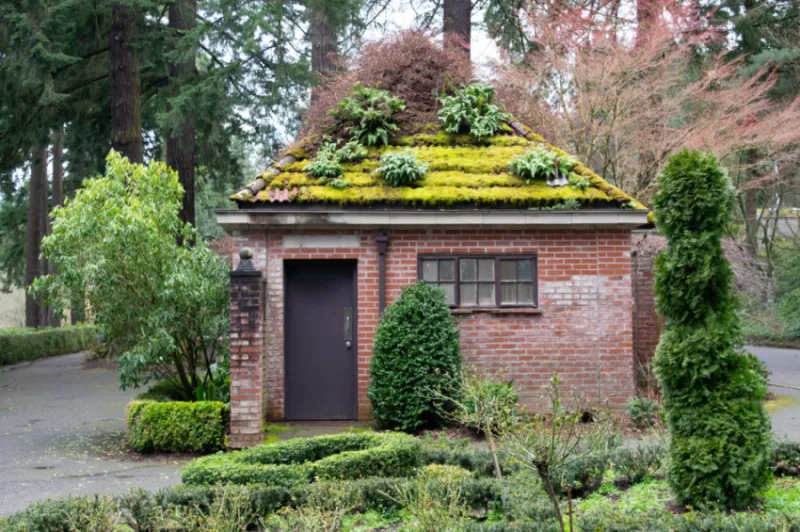
Why green roofs have the power to reduce flooding in cities
If more Canadians commit to green roofs, we could collectively reduce the harm caused by catastrophic flooding.
Imagine a garden on your roof: plants growing, trees thriving, and, most importantly, excess water absorbed by nature rather than inundating your basement. The concept of a “green roof” has come to life in many cities across North America. Not only are they a stunning scene but also a solution to urban flooding.
“A green roof is a system that you apply to a waterproof roof which allows you to safely and securely grow plants,” explained Steven Peck, Founder of Green Roofs for Healthy Cities.
“The technology typically involves several different layers, including a root repellent layer to protect the waterproofing, a drainage layer that allows excess rainwater from leaving the roof through drains, a filter cloth which prevents the clogging of the drainage layer, engineered growing media (not soil) which is light weight, drains well and provides nutrients and anchorage for plants, and, of course, plants themselves, which range from small succulents to trees.”
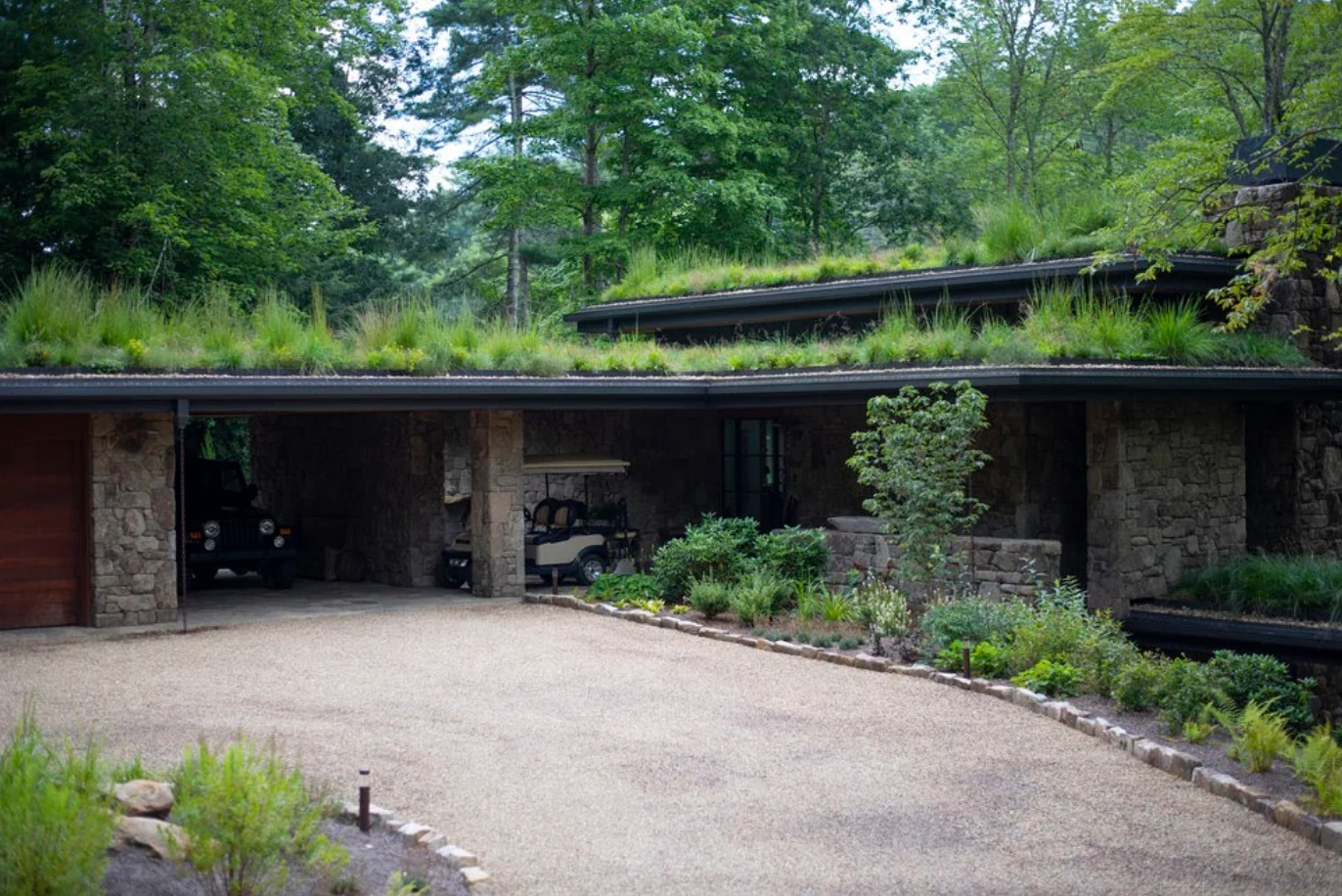
Photo: Lake Toxaway, N.C. (Platt Management Group/www.greenroofs.org)
You may not have realized, but in Toronto alone there are 900 green roofs! They cover more than 8.5 million square feet of roof space, which is about 95 football fields. In 2009 Toronto was the first city in North America to implement a green roof bylaw, which required buildings and additions over a certain size to dedicate a percentage of the available roof space to green roofs.
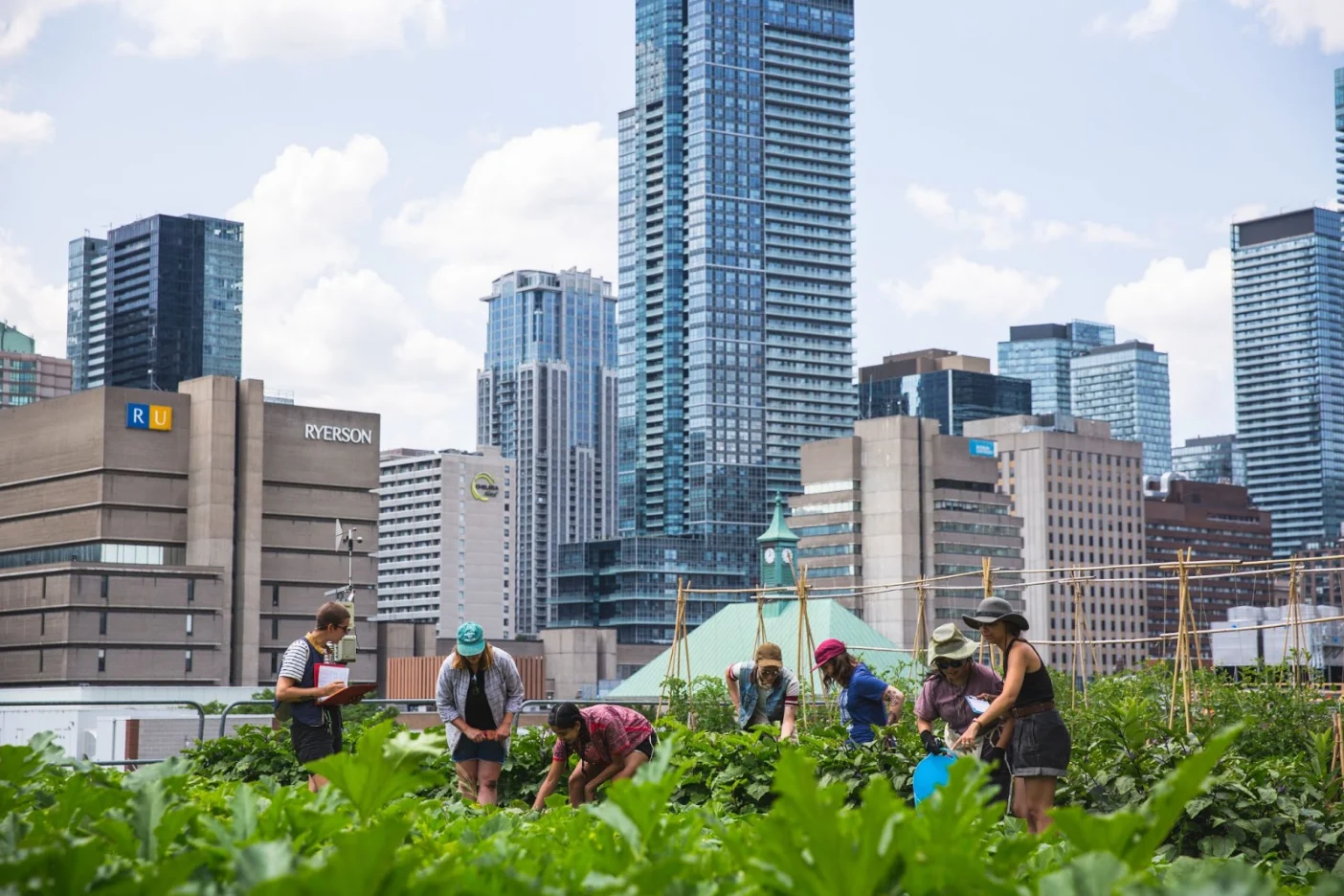
Photo: Ryerson Urban Farm
Since then New York and San Francisco have also passed requirements for green roofs on newly developed buildings, and Vancouver is considering the same as these systems are low maintenance and provide a wide range of benefits.
“Green roofs are very good at retaining rainwater in their different layers. This water is used by the plants (transpired during photosynthesis) and also evaporated back into the atmosphere directly. In this way a green roof recharges its retention ability between rain events,” explained Peck.
Every green roof is different and its design will determine how much water the roof will be able to hold. The more water a roof can hold in a thunderstorm for example, the less that storm will contribute to flooding in your neighbourhood.
A study done in the New York Metropolitan Region determined that a standard roof captures about 24% of rainfall during a standard storm whereas a green roof was able to capture 80% of the precipitation.
“Green roofs can be applied to any structure that has sufficient structural loading capacity to hold the additional weight of the various layers,’ Peck told The Weather Network. “Homeowners with flat roofs often implement green roofs to provide additional amenity spaces on their properties, as do condominium developers. Additional amenity space can add significant value to these properties.The addition of amenity space for individual homeowners justifies the additional cost of a green roof.”
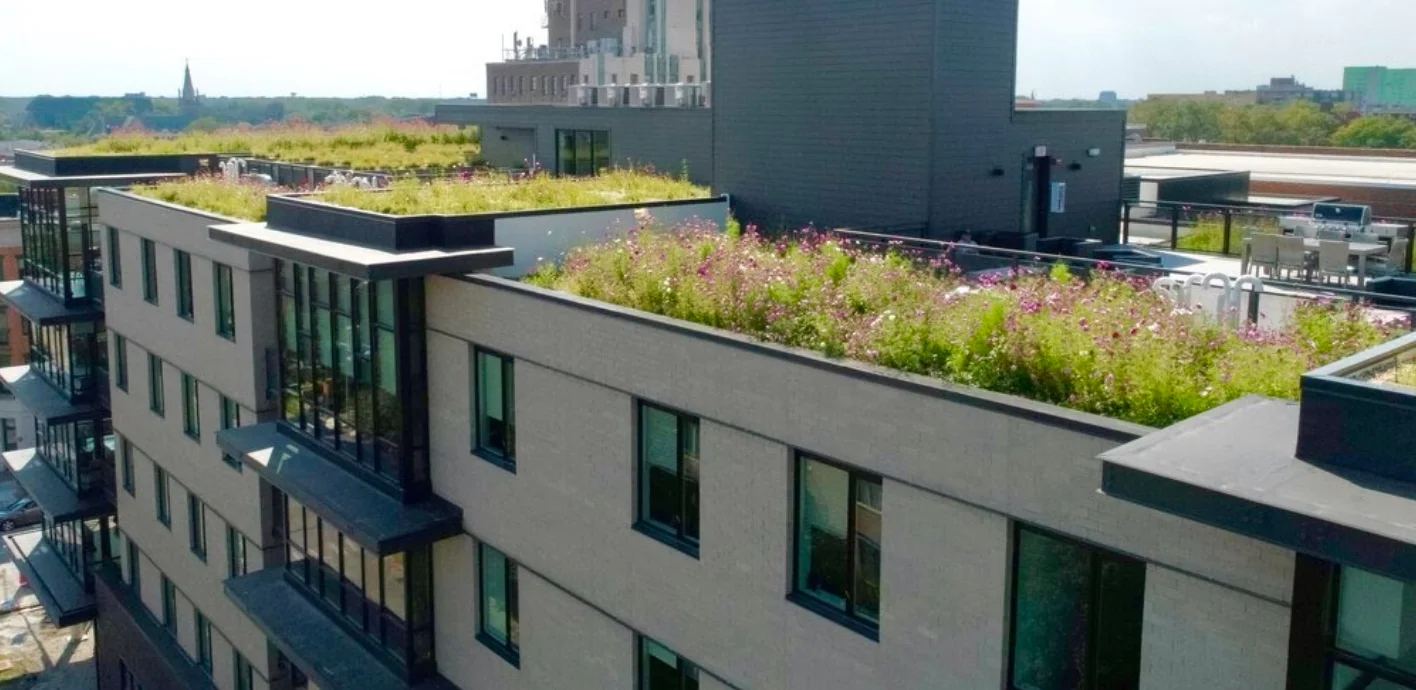
Photo: Oak Park, IL. (Northworks/www.greenroofs.org)
While we know this practice may not be for everyone, the fight against flooding certainly is! If a green roof is not possible on your dwelling, then consider planting trees that absorb or intercept great amounts of water.
“Deciduous trees would be a good choice,” said Peck. “The tree leaves and stems are able to intercept rainfall. Then the water either evaporates or slowly drips to the ground. The interception rates ranges from 19% to 30%, depending on the leaf area index, or the density of the leaf cover of the tree. Trees with denser leaf cover intercept more rainfall.”
Healthy trees, whether they are on your roof or on the ground, all play a role in helping our cities stay cooler, cleaner, and less flooded.
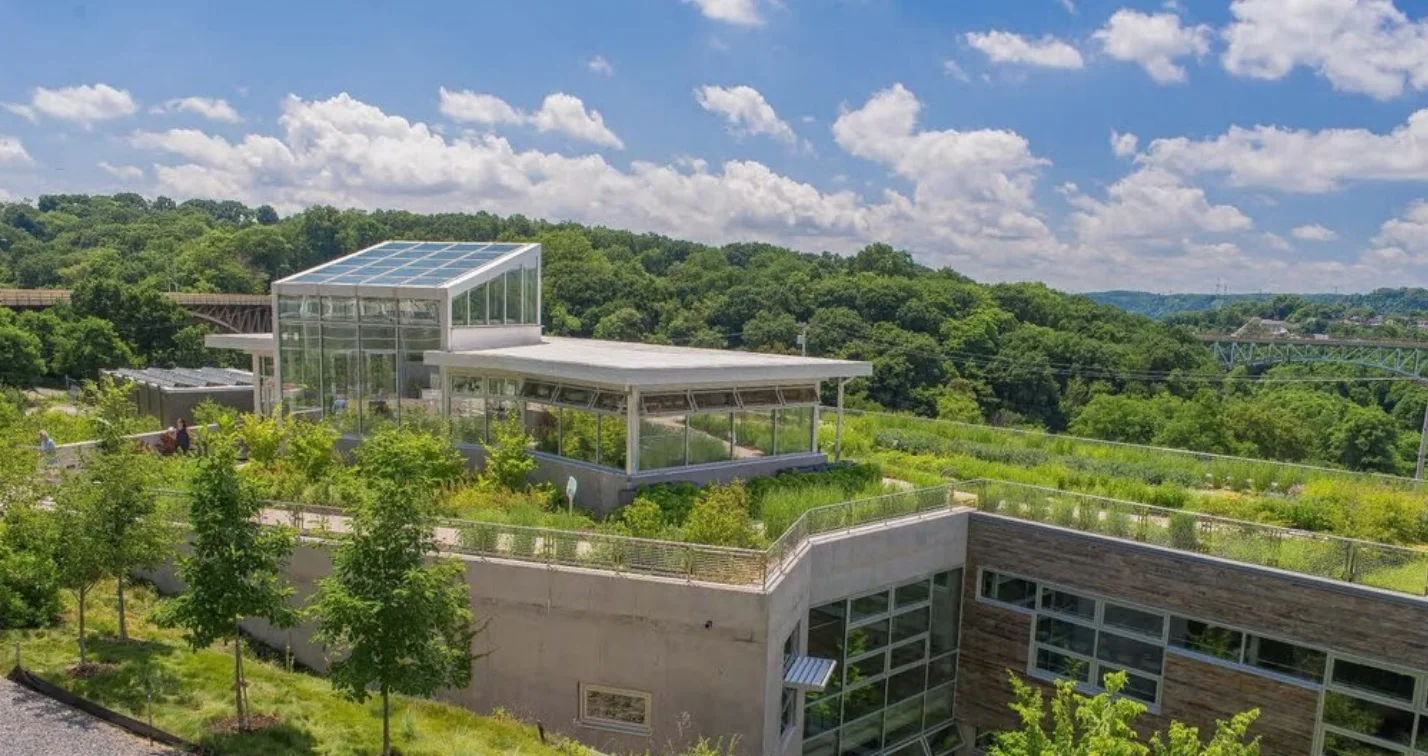
Photo: Pittsburg, PA (The Design Alliance/www.greenroofs.org)
It’s amazing to see some of these green roofs in action. “These technologies are designed to retain and detain excess runoff water, to let it drain after the major storm event has passed. When you have large areas of rooftop retaining and detaining rainwater this can have a positive impact regarding flooding, and also help to improve water quality by reducing contaminated stormwater from entering streams, rivers and lakes,“ added Peck.
In Canada green roofs are beneficial no matter what the season. A study determined that, on average, a green roof is about 40°C cooler than a regular roof on a summer's day. With less heat on your roof the less likely your home is to warm and require air conditioning. The same practice happens in the winter as the roof helps insulate your home and keep heat inside.
It seems like access to building and having the right roof structure will be the biggest factor for the majority of Canadians adapting to green roofs. However, if the large structures continue this practice the potential for decreased flooding should only heighten.
